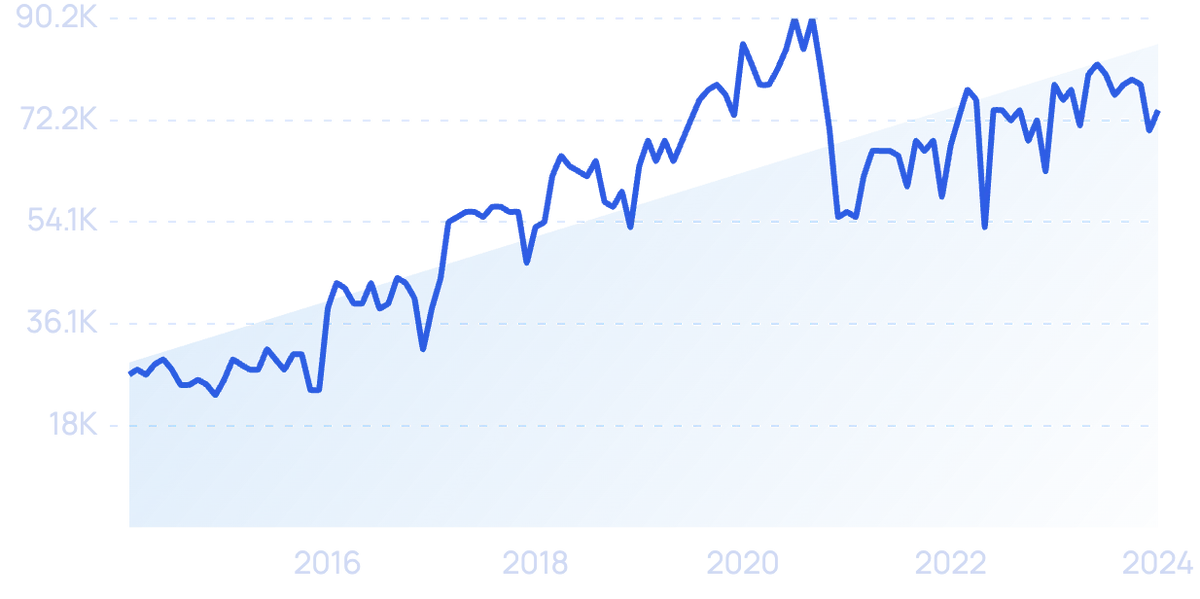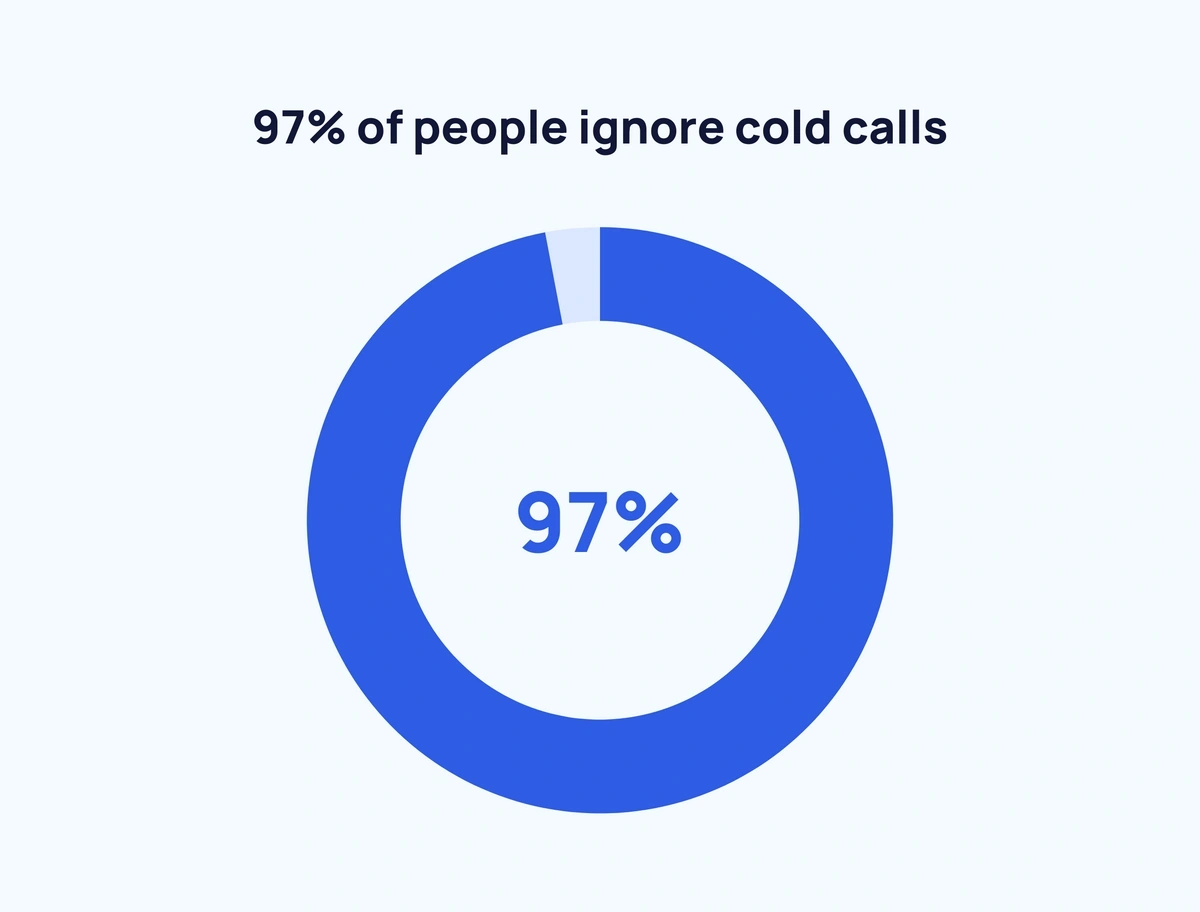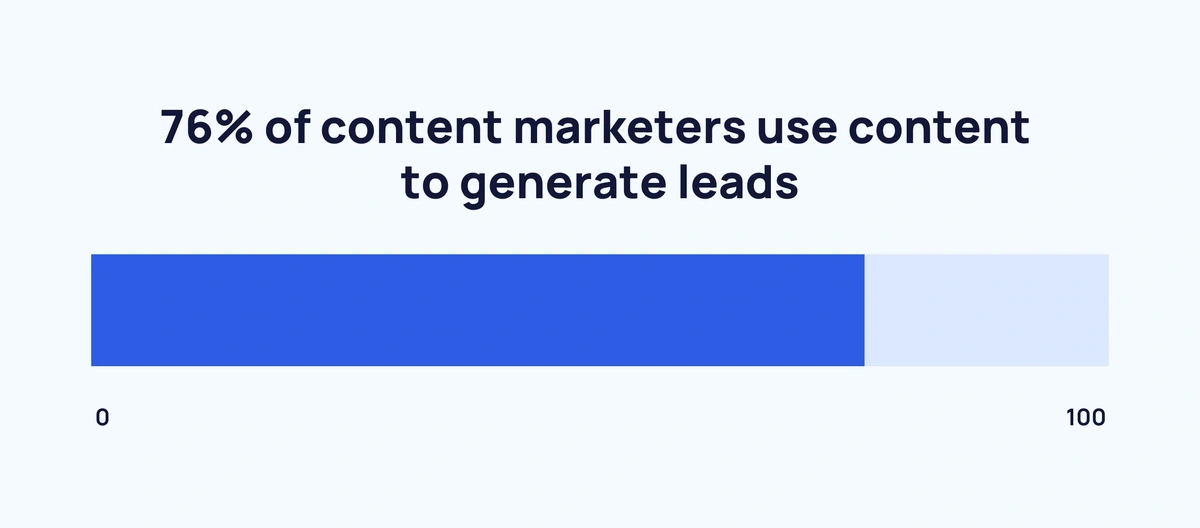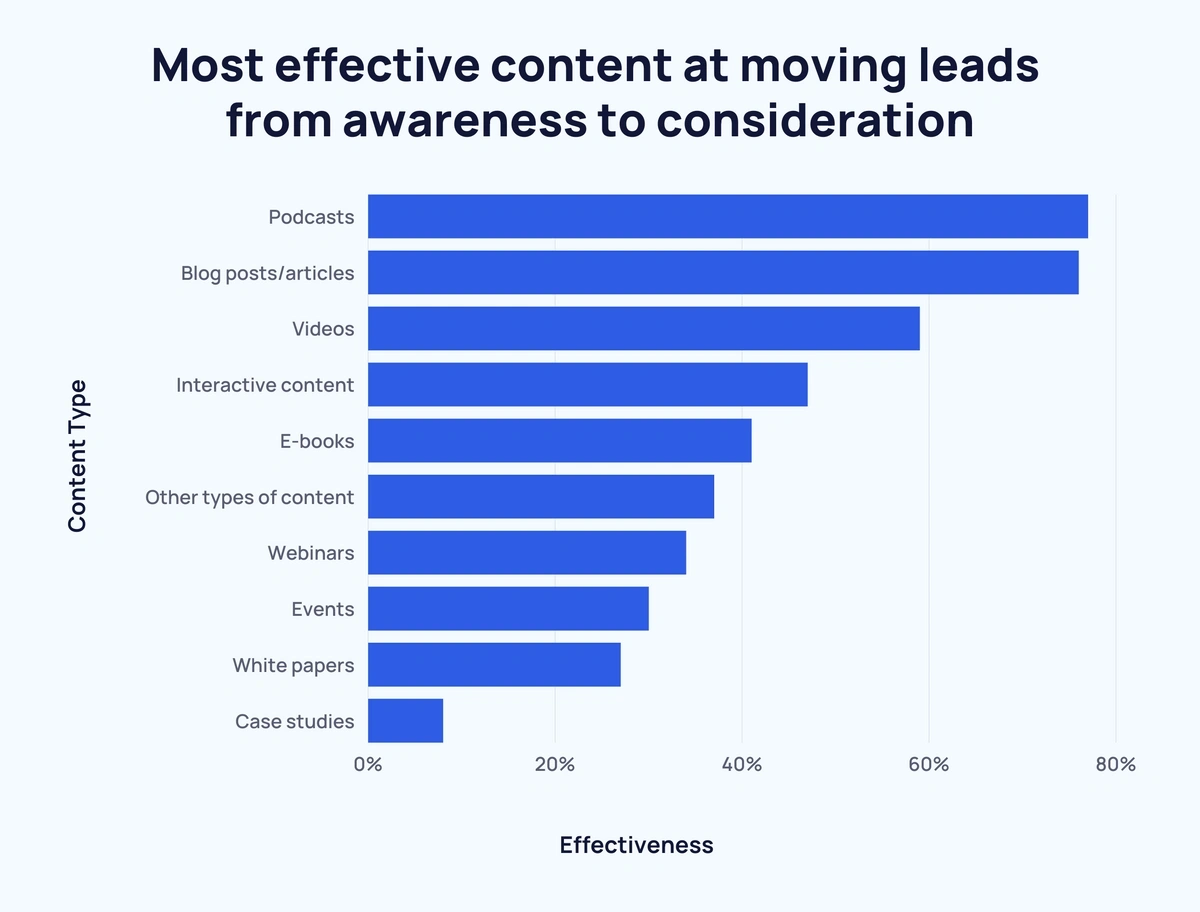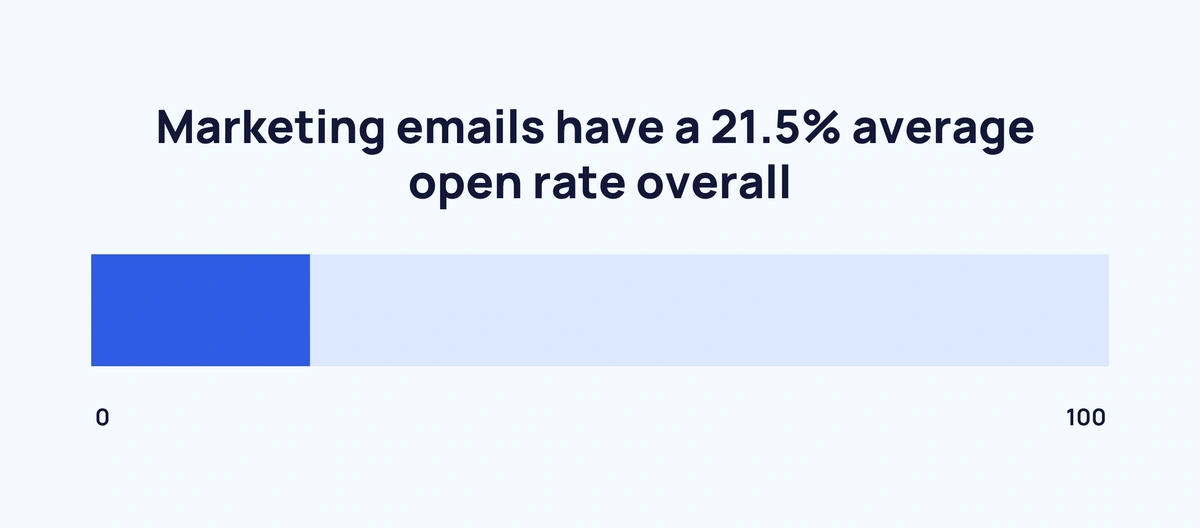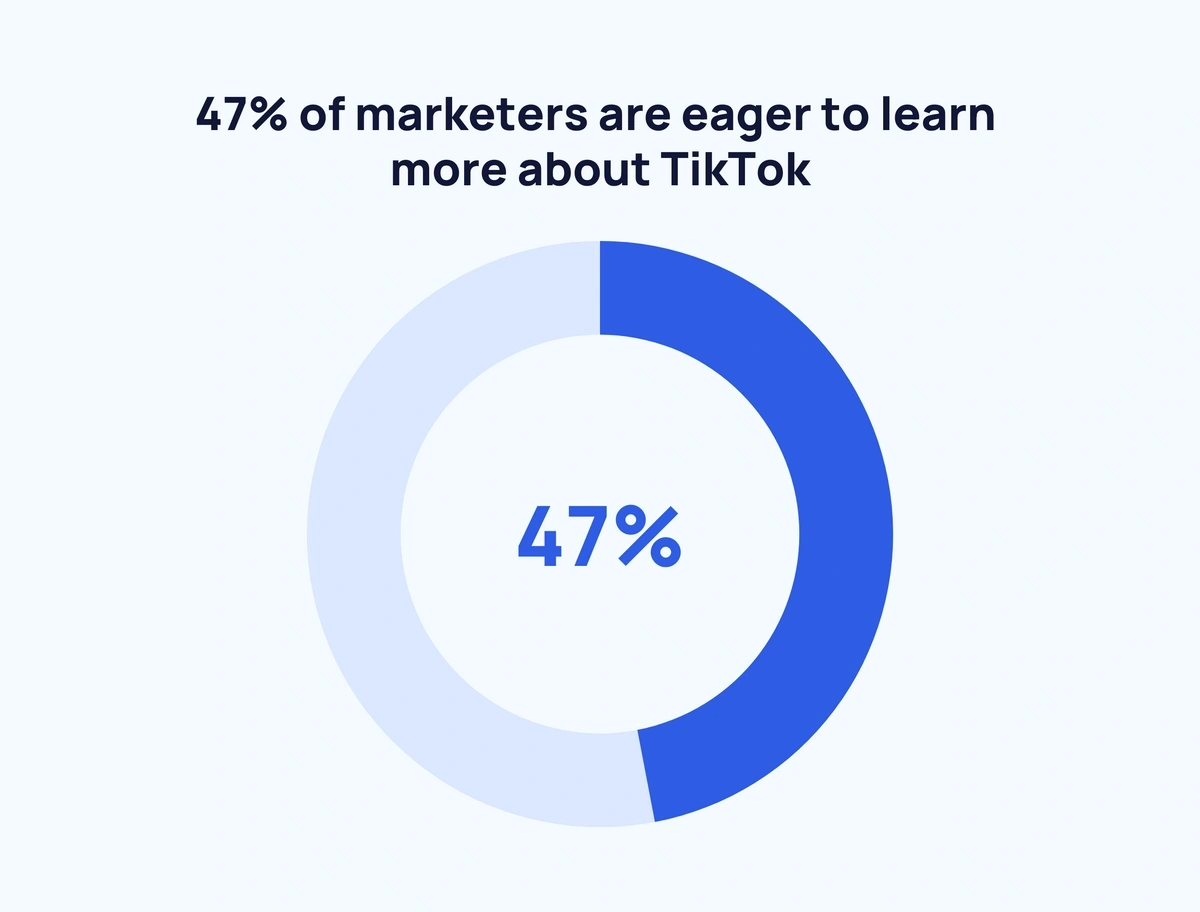
77+ Lead Generation Statistics & Trends (2024)
Lead generation — attracting potential new customers — is something that virtually every organization must do at some point.
Through content, email, social media, and other marketing channels, brands have to get creative to win the attention of future buyers.
How do marketers generate leads in 2024? And how do they get people from “just browsing” to “ready-to-buy”?
Find out in these up-to-date lead generation statistics.
Contents
- Top Lead Generation Statistics
- General Lead Generation Statistics
- Content Lead Generation Statistics
- Email Lead Generation Statistics
- Social Media Lead Generation Statistics
- Lead Nurturing And Conversion Statistics
Top Lead Generation Statistics
Before jumping into the entire list of stats, here are the top 7 lead generation statistics for 2024:
- 50% of marketers consider lead generation a top priority in their marketing campaigns
- Organizations generate 1,877 leads per month on average
- The mean cost per lead across all industries is $198.44
- 97% of people ignore cold calls
- 76% of marketers use content to generate leads
- 68% of marketers say social media marketing has helped them generate more leads
- 44% of sales reps are too busy to follow up with leads
Ready to read the full list? Let’s get to it.
General Lead Generation Statistics
How many leads do brands generate, and how much do they cost? How does lead generation fit into the life of a marketer? This section covers all the basics.
Monthly Google searches for “lead generation”.
50% of marketers consider lead generation a top priority in their marketing campaigns (HubSpot)
Building brand awareness and increasing sales are the two most common goals in marketing. Still, half of the marketers polled in HubSpot’s State of Marketing report said lead gen was the main focus.
On average, organizations generate 1,877 leads per month (Hubspot)
Of those 1,877 leads, 4 out of 5 are considered marketing qualified leads or MQLs. And while most marketers track and know exactly how many leads they’re pulling in, 12% of marketers say they don’t know how many leads they are generating.
The mean cost per lead across all industries is $198.44 (Hubspot)
9% of organizations pay $10 or less per lead while 4% spend $1000 or more. 18% of marketers don’t know how much each lead is costing them. Companies like Zoominfo help businesses by streamlining the lead management process and helping marketers track key metrics.
Monthly Google searches for “zoominfo” are up 147% over the past 5 years.
Generating more leads is the top priority for marketers over the next year (HubSpot)
In HubSpot’s report, marketers were asked to name their top priority over the next 12 months. 34% mentioned lead generation — by far the most common answer. Lead gen beat increasing customer satisfaction (22%), increasing brand awareness (19%) and closing more deals (14%).
IT & services generate more leads per month than any other industry (Hubspot)
IT & services organizations generate 3,660 leads per month on average. They also have the highest MQL rate at 83%. Non-profit organizations generate the lowest amount of leads by far — just 600 per month on average.
39.5% of marketers believe having access to more accurate data could improve their marketing efforts (Ruler Analytics)
Like other marketing goals, lead generation improves when marketers can analyze data to see what’s working. Other ways marketers believe results could improve are increasing team size (36.6%) and budgets (35.1%).
The vast majority of people (97%) ignore cold calls (Business Wire via Zipwhip)
In one of the most obvious signs that outbound lead generation strategies are a thing of the past, cold calls are almost completely ineffective. Recipients consider unsolicited phone calls annoying and intrusive.
95% of marketers believe they know which channel drives the most leads (Ruler Analytics)
Of the marketers who can point to their most impactful lead channel, 27% say organic search generates the most leads. Social media is another effective lead gen channel, with 1 in 5 marketers claiming it as a top source.
Content Lead Generation Statistics
For many brands, content marketing is the first step in lead generation — especially when directed toward audiences in the early stages of the buyer’s journey. Here’s how marketers are finding leads with content in 2024.
Around 3 in 4 content marketers use content to generate leads (Parse.ly)
Today’s marketers know that content is one of the most effective methods for generating inbound leads. That might be even more true for B2B marketing. 85% of B2B marketers use content to generate leads as opposed to just 60% of B2C marketers.
Generating leads is a top three goal for content marketers (Semrush)
Of the 1,500 content marketers surveyed in Semrush’s 2022 State of Content Marketing report, 36% pointed to lead generation as a key marketing goal. Ahead of lead gen were increasing brand awareness (45%) and attracting website traffic (37%).
Attracting quality leads is content marketers’ biggest challenge (Semrush)
Content marketers face a huge number of challenges, from creating content that resonates with audiences to quantifying the ROI of their campaigns. Of all the challenges, lead generation takes the top spot, with 41% of content marketers saying it’s one of their greatest struggles.
Content marketing is most valuable when it targets leads in the early stages of the buyer’s journey (CMI)
54% of content marketers believe early-stage content—designed to generate awareness and interest — provides the most overall value. Only 8% believe content aimed at “ready-to-buy” audiences is the most valuable.
Podcasts, blog posts, and videos are the top three content types for generated awareness and demand (CMI)
What types of content are most effective at moving leads from awareness to consideration? According to 77% of marketers, podcasts are the best bet.
Blog posts and articles take the second spot at 76%, while 59% see video as an effective tool. The bottom three content types? Case studies, white papers, and webinars.
Email Lead Generation Statistics
Email marketing plays a key role, not just in lead generation, but in lead nurturing and conversion. Email capture is often the first step in lead generation, giving marketers a list of potential customers to send marketing messages.
Only around 1 in 5 marketing emails are opened (Campaign Monitor)
Average open rates vary across industries, with retail at the low end at 17.1% and education at the high end at 28.5%. Education’s high-performing emails could be the result of the move toward remote learning over the past two years.
Open rates are up while click-to-open rates are down year-over-year (Campaign Monitor)
Are marketers getting better at writing subject lines? Email open rates have shot up 3.5 points to 21.5% over the past year. Getting readers to click links within emails is a different story. Those numbers are down 3.6 points from the past year. Increased privacy protection could be behind the change.
Marketing emails perform better when sent on a Monday, Tuesday, or Wednesday (Campaign Monitor)
Campaign Monitor’s benchmark study reveals how leads interact with emails on each day of the week. Mondays had the highest open rate at 22%. The highest click-through rates (2.4%) came on Tuesdays. Click-to-open rates peaked on Tuesdays and Wednesdays (10.8%).
Less than half of online shoppers open branded emails at least once per day (Digital Commerce 360)
A little under half of online shoppers open retail emails on a daily basis.
When looking at a weekly timeframe, that number jumps up to 72%. Shoppers are opening emails at a healthy rate. How often are they buying?
60% of consumers say they make at least one monthly purchase after reading a brand’s email (Digital Commerce 360)
In a 2022 survey of 1,015 online shoppers, 60% said email marketing leads them to make at least one monthly purchase. Just 10% said they make weekly purchases, while 22% claim to never make purchases from marketing emails.
Social Media Lead Generation Statistics
With 4.65 billion active social media users in the world, marketers increasingly rely on social media for lead generation. Both B2B and B2C brands are heavily active on social media, a trend that potential buyers have come to embrace.
Monthly Google searches for “social media marketing” are up 225% over the past 5 years.
68% of marketers say social media marketing has helped them generate more leads (Social Media Examiner)
Social media is a powerful tool for lead gen. But experience helps, too. 72% of marketers with five or more years of experience say social media helps them generate leads. Only 42% of marketers with less than one year of experience say the same.
1 in 4 social media marketers have lead generation as their top learning priority (Social Media Examiner)
Social Media Examiner’s 2022 Report surveyed over 2,000 social media marketers. When asked what they’d like to learn about most, 25% of social media marketers responded with “lead generation”. The only learning area that outscored lead generation was “increasing sales”.
Around half of ll marketers are eager to learn more about TikTok (Social Media Examiner)
TikTok has taken the world by storm, but marketers are still playing catch up. Today, just 18% are using TikTok, though almost half of social media marketers are preparing to move onto the platform.
Google searches for “tiktok ads” over the past 5 years are up 99x+.
74% of social media users prefer to see 1-2 posts per day from brands they follow (Sprout Social)
Just because users want to see 1-2 posts per day doesn’t mean brands should only be posting 1-2 per day. Since social media algorithms curate users’ feeds, newer brands might need to post more often to gain visibility.
Over half of social media users like seeing posts from brands highlighting products or services (Sprout Social)
When polled on the types of social content they like to see, 51% of consumers mentioned posts that highlight a brand’s products. Only 14% mentioned liking behind-the-scenes content.
Lead Nurturing and Conversion Statistics
Sourcing and qualifying leads is a top marketing goal, but it’s only half the battle. Organizations need to nurture leads to take them from “interested” to “ready-to-buy.” Marketing teams hand off warm leads to sales teams, who attempt to convert leads into customers.
84% of marketers use form submissions for conversions (Ruler Analytics)
Converting visitors into leads — and leads into sales — is central to lead generation. Today, the most common way to convert is with online submission forms. How do other methods stack up? Just over half (50.3%) of marketers use phone calls for conversions and just under one-third (33.2%) use live chat.
41% of companies struggle to quickly follow up with leads (Verse)
In 2023, sales teams need to be lightning-quick in responding to qualified leads. For many companies, following up in a timely manner is an enormous challenge — especially when leads come in after regular business hours.
Almost half of all sales reps are too busy to follow up with leads (Verse)
Sometimes following up with leads quickly isn’t the issue — it’s following up altogether. Almost half of sales reps have too much on their hands to handle all of their incoming leads. And while automated lead management solutions are readily available, only 25% of sales teams use them.
Poor lead quality is the top complaint among sales teams handling inbound leads (Verse)
Marketing and sales teams work together in the lead conversion process — marketers generate leads and sales reps convert leads into sales. But sales teams have plenty of complaints about the leads they get from marketing departments. 44% of sales reps complain about lead quality, 39% about readiness to buy, and 37% about an inability to contact.
Wrap Up
For all kinds of businesses, generating new leads every month is the key to future growth and success. And while some marketers struggle with lead generation, they almost all agree that it’s a huge part of their overall strategy.
In 2022, marketers are combining content, email, and social to create lead-generating ecosystems to send ready-to-buy prospects to sales teams. It’s the marketers who can best track and adjust their strategies who will find the most success.
If you enjoyed these stats, take a look at our other related pages: 12 Key Marketing Trends and 11 Key Martech Trends.

